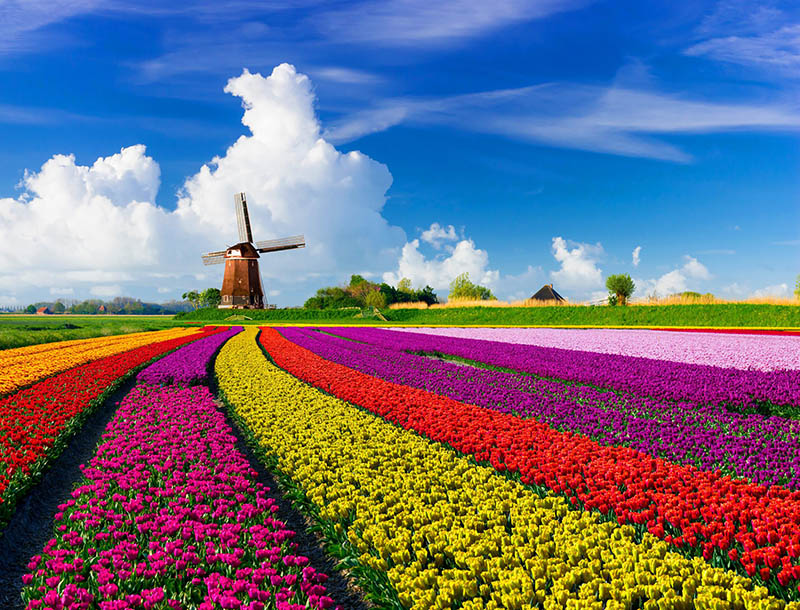Tulip Mania and other interesting tulip facts
It’s finally spring (never mind any snow still on the ground). Daffodils have emerged, their buds anxious to open. Soon tulips (Tulipa), perhaps the most anticipated flowers of spring, will grace front yards and town squares.
Tulips are so plentiful that sometimes we take their presence for granted. They’re common flowers, but how much do you really know about them?
Many people assume that since tulips are associated with Holland, they originated there. They’re actually descendants of wildflowers native to Central Asia. The word “tulip” is derived from the Persian word for turban.

Tulip fields in the Netherlands.
Around 3,000 years ago, they were being grown in what is now Turkey. Today, the tulip is Turkey’s national flower.
In the late 1500s, tulips made their way to Europe as a gift to a botanist at the University of Leiden in the Netherlands. By the 1630s, tulips were being grown commercially in Holland, and hybrid varieties were being developed. The new and exotic flowers were a favorite of the well-to-do.
Along with an increasing demand for tulips, prices grew. During a few years in the 1630s, speculators drove the contract price of the rarest varieties to extremes, eventually reaching a fever pitch with certain bulbs selling for as much as a craftsman might earn in a year. That bout of “Tulip Mania” came to an end in 1637 when prices outpaced contract buyers’ willingness to pay.
Some of the most sought-after varieties that helped fuel Tulip Mania had striped or streaked petals, a condition referred to as “broken.” It wasn’t until nearly 300 years later that scientists had the technology to discover that the broken coloration of the petals was caused by a virus (tulip breaking virus aka tulip mosaic virus) transmitted by aphids.
After the drastic drop in the price of tulip bulbs and the end of contract price speculation in 1637, commercial growing of tulips continued to expand. Holland is still recognized for its production of tulips and remains the world’s largest producer with about 3 billion bulbs each year.
Today, there are over 3,500 named tulip varieties that come in a wide selection of colors and shapes. While they can be grown from seed, to do so would take 7-12 years to flower since a bulb must be formed first.
Growing tulips from bulbs is quick and easy. Just plant in the fall and enjoy flowers the next spring.
Perhaps the most difficult part of growing tulips is choosing which tulips to grow. Pick one color or several. Tulips come in warm colors ranging from white, cream and yellow to pink, red and orange.
Flowers are available in the readily recognizable egg shape, along with ruffled or fringe-edged petals, pointed petals and single or double varieties.
Tulips bloom for about a week. If you’d like to extend the time, plant several types, including early, mid-, and late-spring bloomers.
While tulips are a perennial, they may fail to bloom after the first year. Sometimes the bulbs fall victim to hungry squirrels. Sometimes it’s the result of unfavorable conditions.
Tulips prefer sun or partial shade and well-drained soil. The bulbs will rot in soggy soil. After flowering, leave foliage until it dies back on its own to allow the bulb to store nutrients for flowering the following spring.
For more information on growing tulips, go to this website.
It won’t be long before tulips are blooming in gardens all around us. While it’s too late to plant bulbs for this year, there’s plenty of time between now and fall planting to choose the perfect tulips for your garden.

